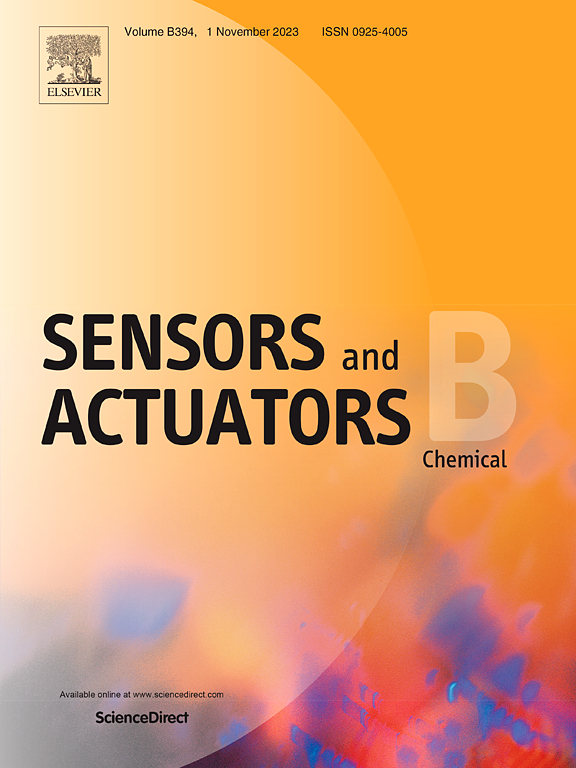通过可控嵌段共聚物自组装的先进等离子体共振
IF 8
1区 化学
Q1 CHEMISTRY, ANALYTICAL
引用次数: 0
摘要
等离子体系统中简单的光操作可以放大表面增强拉曼散射(SERS)。本研究首先提出了基于便携式嵌段共聚物(BCP)的分布式布拉格反射器(DBR)薄膜的制备,并将其集成到基于Au纳米颗粒(AuNPs)的SERS衬底中,作为一种新的解决方案,以方便扫描SERS灵敏度作为工作波长(λw)的函数。以层状聚苯乙烯-b-聚(2-乙烯基吡啶)(PS-b-P2VP)共聚物为材料,在对称约束下通过热退火制备了无缺陷多层纳米结构模板。通过控制交联并将乳酸(LA)掺入到2VP单元中,产生了高度不对称的巨大片层结构,从而使bcp基DBR薄膜在可见光至近红外波段具有可调性。基于bcp的DBR薄膜的独立附加特性允许为指定的SERS传感器立即调制λw。在λw = 522 nm的特定波长下,SERS灵敏度显著提高(约99倍),且该传感器对田间条件下苹果表面杀虫剂Thiram的检测限极低(0.2 ppm)。由于其卓越的灵敏度和易于制造,所提出的dbr集成SERS传感器在食品安全,农业和环境监测方面具有实际潜力。本文章由计算机程序翻译,如有差异,请以英文原文为准。
Advanced plasmon resonance through controllable block copolymer self-assembly
Simple light manipulation in plasmonic systems enables amplification of surface-enhanced Raman scattering (SERS). This study first proposes the fabrication of portable block copolymer (BCP)-based distributed Bragg reflector (DBR) films and their integration into a SERS substrate based on Au nanoparticles (AuNPs), as a novel solution to facilitate scanning of the SERS sensitivity as a function of working wavelength (λw). Using a lamella-forming polystyrene-b-poly(2-vinyl pyridine) (PS-b-P2VP) copolymer, a template of defect-free multilayer nanostructures was achieved via thermal annealing under a symmetric confinement. The crosslinking control and incorporation of lactic acid (LA) into the 2VP units produced highly asymmetric giant lamellar structures, which led to BCP-based DBR films with feasible tunability in the reflected wavelength from visible to near-infrared regions. An independently attachable feature of the BCP-based DBR films allowed an immediate modulation of λw for the designated SERS sensor. The SERS sensitivity was significantly enhanced (by approximately 99 times) at a specific λw = 522 nm, and the integrated sensor had a remarkably low limit of detection (0.2 ppm) for the pesticide, Thiram, on the surface of apples under field conditions. Owing to its exceptional sensitivity and ease of fabrication, the proposed DBR-integrated SERS sensor demonstrates practical potential for food safety, agriculture, and environmental monitoring.
求助全文
通过发布文献求助,成功后即可免费获取论文全文。
去求助
来源期刊

Sensors and Actuators B: Chemical
工程技术-电化学
CiteScore
14.60
自引率
11.90%
发文量
1776
审稿时长
3.2 months
期刊介绍:
Sensors & Actuators, B: Chemical is an international journal focused on the research and development of chemical transducers. It covers chemical sensors and biosensors, chemical actuators, and analytical microsystems. The journal is interdisciplinary, aiming to publish original works showcasing substantial advancements beyond the current state of the art in these fields, with practical applicability to solving meaningful analytical problems. Review articles are accepted by invitation from an Editor of the journal.
 求助内容:
求助内容: 应助结果提醒方式:
应助结果提醒方式:


